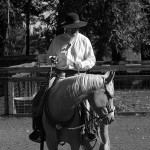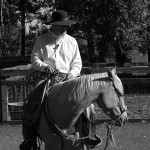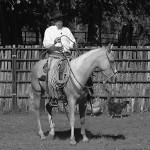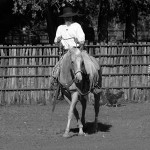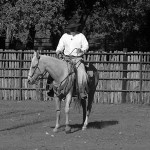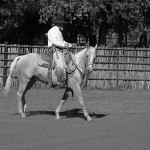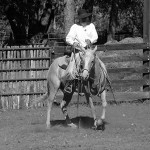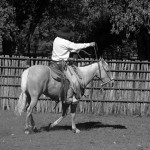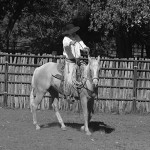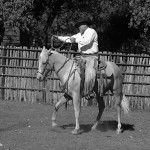With Richard Caldwell
Riding in the hackamore can be a little intimidating if you’ve never done it before. We’re going to start out with some flexing, and then work on a counter-bend exercise, which is a preparation for the turn around.
There is a right way and a wrong way to flex your horse. If I am riding in a hackamore, I flex them using a “bump, bump” and then relax when my horse is in position.
The most important thing to keep in mind when riding in the hackamore is that you are wanting your horse to operate from feel, not from you mechanically holding him in position. So, your corrections with your hands will be little bumps with the hackamore, not a steady pull or trying to hold him in place. Being consistent with how you shift your weight and prepare your body before each movement will help build that feel in your horse, so he can start to respond to those subtle cues early, because he is feeling of you.
Proper Flexion
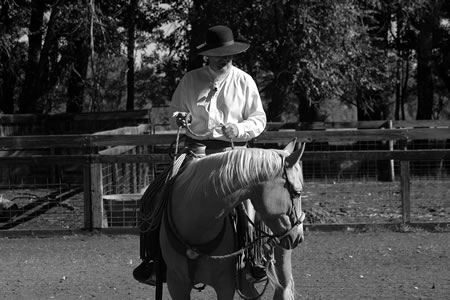
Photo 1
1. Here, I've given him a little upwards bump with my left rein, then released when he flexes to the left.

Photo 2
2. If he tries to take his head back on his own, he'll run into my hand and a little bump from the rein.

Photo 3
3. Here, I've released my left rein, and he's maintaining flexion to the left with no tension on the rein.

Photo 4
4. Now I can ask him to bring his head back to the right with my right rein.
Counter Bend Exercise – Circle Right – Bent Left
This next exercise is a preparation for the turn around. This is a slow exercise that helps him stretch and learn to get his shoulders and rib cage positioned, so that he can be out of his own way in the turn around.
When I am working a cow for instance, I want to be able to stop with my inside rein, then be able to make a quick turn in the same direction and go. This exercise practices that position, so that when it’s time to speed things up, he is comfortable and used to moving that way.
To start, we’ll walk in a circle to the right, but my horse will be bent to the left. Basically, what I’m doing here is moving the front end across his hindquarters and asking him to step across with his front end. I use as much leg pressure as I need, but I will only bump with my reins for his head position.
Once he is comfortable with this exercise at the walk, I will step things up and work on it at the trot.
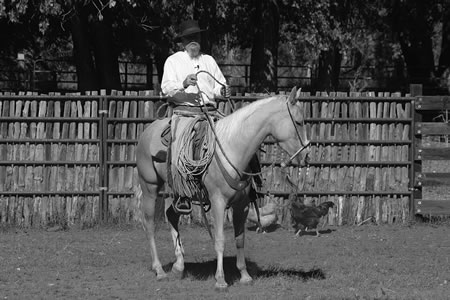
Photo 1
1. I will start by shifting my body and asking my horse to bend to the left and bring his shoulders around to the right. I'll bump with my left rein if he takes his head back.
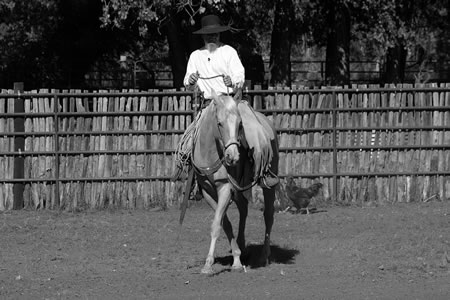
Photo 2
2. I make sure that I am bent the same direction as my horse, with my ribs up and out of the way. I use as much leg pressure as I need with my left leg to bring his front quarters to the right.
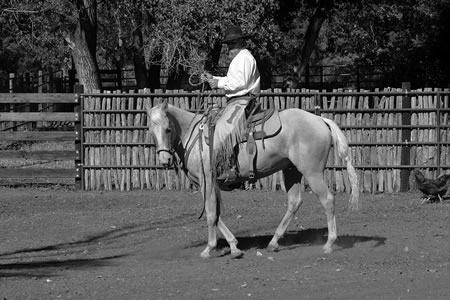
Photo 3
3. Here, you can see his rib cage is up and out of the way as he moves his shoulders to the right. If I were working a cow, I might stop here by lifting my left rein.
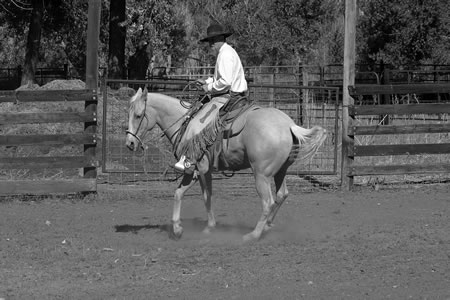
Photo 4
4. Then when I'm ready to turn, I just look to my left and go. He can swing back more easily to the left because his rib cage is in position, up and out of the way.
Counter Bend Exercise – Circle Left – Bent Right

Photo 1
1. Same thing this direction. My horse is bent to the right, and I ask with my right leg for him to move his front quarters around his hindquarters.
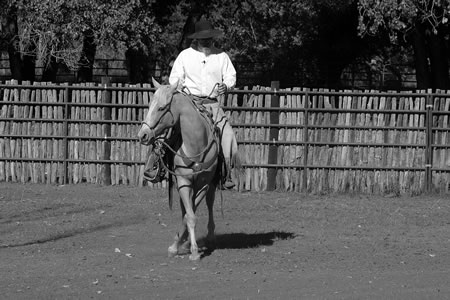
Photo 2
2. If he tries to take his head away from me, I'll give a bump with my right rein. Here, you can really see how his shoulders are lifted as he steps his front quarters over.
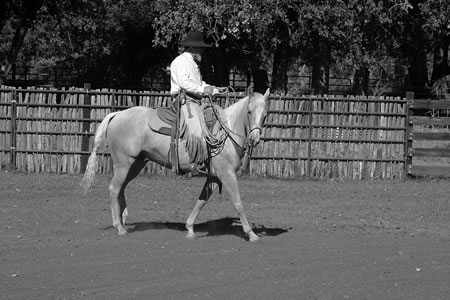
Photo 3
3. My body is shaped like I want his shaped, and I'm looking in the direction I want him to travel—to the left.
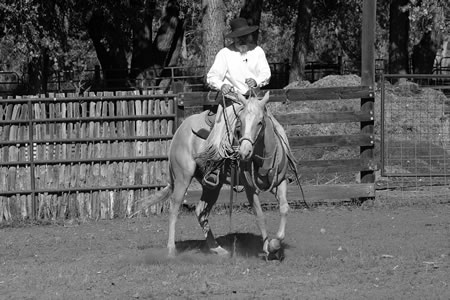
Photo 4
4. Now he is prepared. If I stop and look to my right as I bring my hand to my hip, he can come through himself and turn around to the right.
Common Mistakes

Photo 1
1. I don't want to lead my horse out like this to bring his front quarters to his right. That will invert the tip of his head, and then he is going to fall into the turn.

Photo 2
2. You can see here that his rib cage is not up and out of his way as he comes through to his right. He cannot turn as well or as quickly in this position.
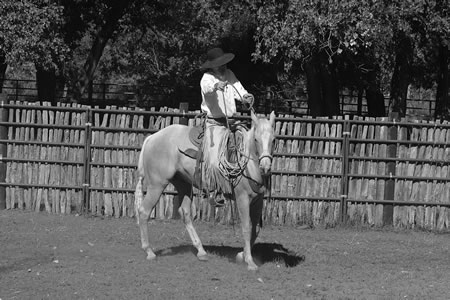
Photo 3
3. Again, if I tried to lead my horse's front quarters over instead of using my leg, he's going to fall into the turn and not get his rib cage in position.
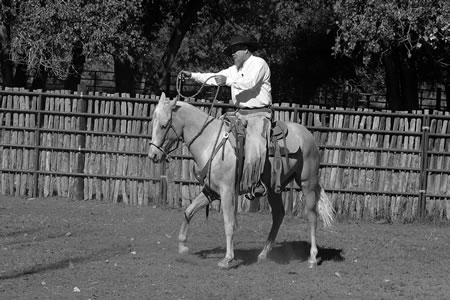
Photo 4
4. If I take my rein across his neck like this, its going to invert his neck, and he's just going to fall down on his shoulder.
This article originally appeared in Eclectic Horseman Issue No.44



